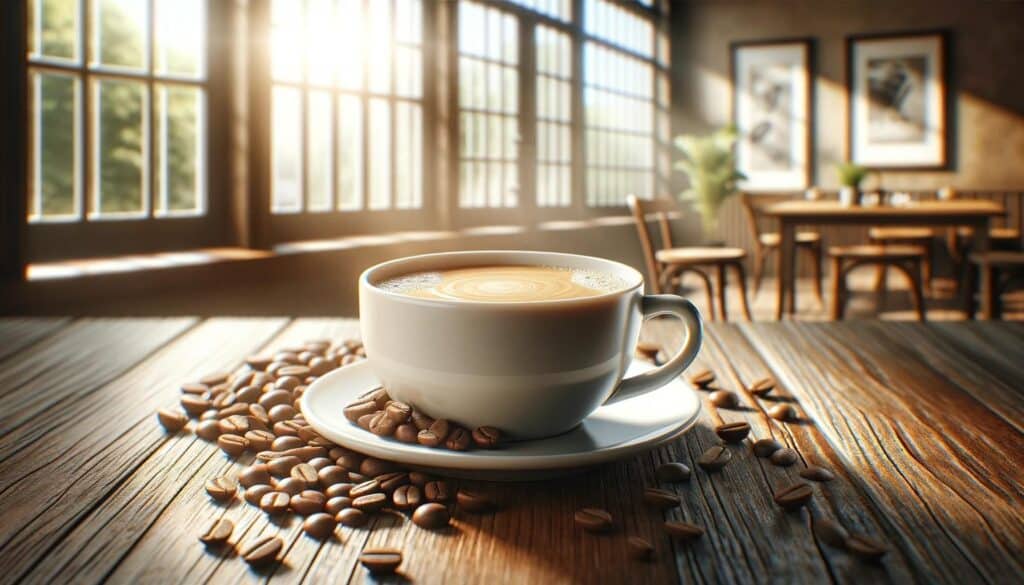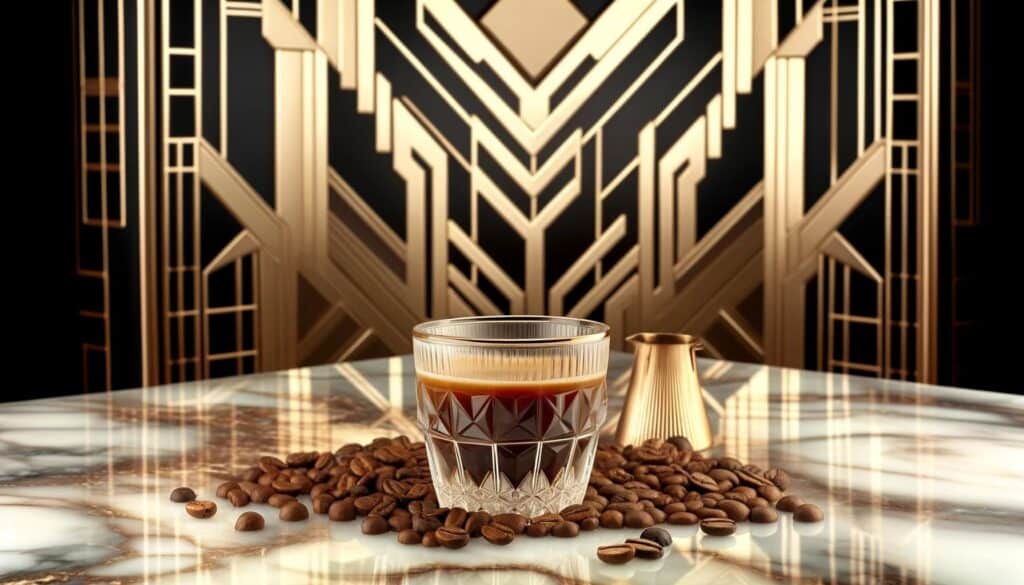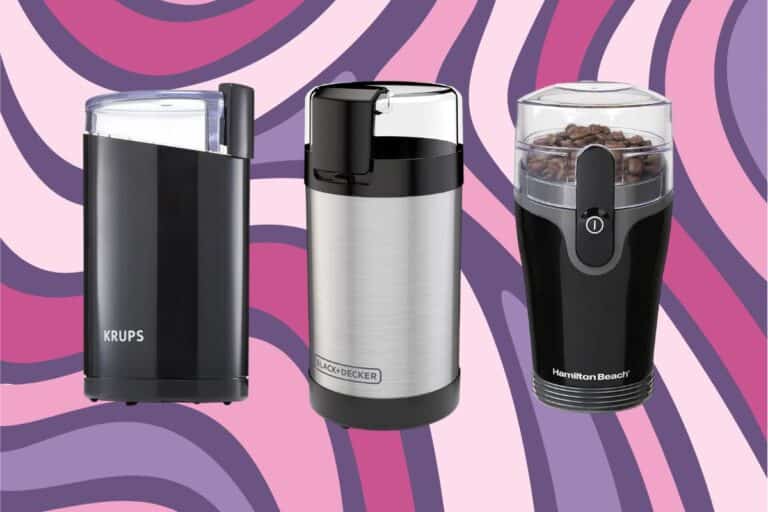Coffee does much more than wake us up; it brings people together, sparks creativity, and is enjoyed worldwide. The key to the rich variety of coffee lies in the roasting process. This essential step changes green, somewhat grassy-smelling beans into the rich, aromatic coffee we love. Our guide will explore the fascinating process of coffee roasting, highlighting the special and nuanced light roast coffee.
What is a Light Roast Coffee?
Light roast coffee is roasted for a shorter period, preserving the bean’s original flavors and complexities, resulting in a light brown color without surface oil. It offers a more vibrant and complex flavor profile with higher acidity, showcasing fruity, floral, or herby notes that reflect the coffee’s origin. Preferred by coffee enthusiasts, light roast coffee highlights the unique characteristics of the bean, offering a lighter body and more nuanced tasting experience.
Brief Overview of Coffee Roasting
Roasting coffee is all about applying heat to green coffee beans to turn them brown, a change that does more than alter their color. It’s a complicated chemical reaction that brings out the flavors, smells, and acidity hidden inside the bean. Roasting blends science and art, needing careful control of temperature and time to get the roast just right. The process usually heats the beans quickly to between 180°C and 240°C (356°F to 464°F). This makes the beans crack, expand, and release their delicious flavors and smells. The roaster’s job is to know exactly when to stop roasting to shape the coffee’s final taste.
Definition of Light Roast Coffee
Light roast coffee stands out for its lively, bright flavors that show off the coffee bean‘s natural taste and where it comes from. These coffees are roasted for a shorter time, stopping just after the first crack stage, which happens around 196°C to 205°C (385°F to 401°F). This lighter roasting keeps the bean’s original traits, leading to a lighter color and sharper acidity than medium or dark roasts. Light roasts boast complex flavors, from floral and fruity to sweet and spicy, depending on their origin. Unlike darker roasts, light roast beans look matte because the roasting heat hasn’t drawn out their oils.
As we delve into light roast coffee, we enter a world where the subtle differences in taste and smell take center stage, offering a cup full of nuance and diversity, reflecting the regions the beans come from.
The Basics of Coffee Roasting

The journey from a raw, green coffee bean to the final roasted product that we brew and enjoy is a fascinating process that involves careful manipulation of time and temperature. This section delves into the intricacies of coffee roasting, exploring the spectrum of roast levels from light to dark, and the factors that influence this transformation.
Explanation of the Coffee Roasting Process
Coffee roasting is the process of heating coffee beans to bring out their complex flavor profiles. It begins with green coffee beans, which are loaded into a roaster where they are heated. As the beans are roasted, they undergo several stages of transformation. They lose moisture, increase in size, change color, and develop new flavors and aromas through the Maillard reaction and caramelization.
The process is closely monitored and controlled to achieve the desired roast level. This involves adjusting the temperature and the time the beans spend roasting. Roasters listen for “cracks” – sounds made by beans as they expand. The first crack signifies the beginning of a light roast, and any roasting beyond this point will lead to medium or dark roasts depending on how long the beans are left in the roaster.
The Roasting Spectrum: Light, Medium, and Dark Roasts
The roasting spectrum describes the range of possible outcomes in the flavor, color, and oiliness of the beans based on how long they are roasted.
- Light Roasts are often stopped immediately after the first crack. These beans are light brown, with no oil on the surface. Light roasts preserve many of the unique flavors of the coffee bean, reflecting the bean’s origin.
- Medium Roasts are stopped before the second crack. These beans are a medium brown color, with a stronger flavor and a non-oily surface. This roast level balances acidity, aroma, and complexity, making it widely popular.
- Dark Roasts are roasted until after the second crack. These beans are dark brown to almost black, with an oily surface. The flavors become pronounced, with a bitterness that overshadows the bean’s natural characteristics, leaning towards a richer, sometimes smoky taste.
Factors Influencing the Roasting Process
Several key factors influence the coffee roasting process, affecting the bean’s final flavor, body, and acidity:
- Bean Origin and Type: Different beans have unique characteristics based on their genetic variety, soil, altitude, and climate. These factors affect how beans react to roasting.
- Roasting Temperature and Time: Higher temperatures and longer roasting times will result in darker roasts. The roaster must balance these elements to achieve the desired roast level.
- Humidity and Ambient Temperature: The environment in which coffee is roasted can affect the process. Higher humidity and lower ambient temperatures can extend the roasting time.
- Roasting Method: The method of roasting (e.g., drum roaster, air roaster) also impacts the flavor. Each method applies heat differently, affecting the development of flavors.
Understanding these basics of coffee roasting highlights the complexity and skill involved in transforming green coffee beans into the final product. The roaster’s decisions at each stage influence the beans’ flavor profile, offering a wide spectrum of tastes for coffee enthusiasts to explore.
Characteristics of Light Roast Coffee

Light roast coffee is celebrated for its ability to highlight the unique characteristics and flavors inherent to the coffee bean’s origin. This section examines the distinctive features of light roast coffee, including its color, flavor, acidity profile, bean surface appearance, and the common names associated with this roast level.
Color, Flavor, and Acidity Profile
- Color: Light roast coffee beans have a light brown hue, significantly lighter than medium or dark roasts. This lighter color reflects the shorter roasting process, which doesn’t allow the sugars in the bean to fully caramelize.
- Flavor: The flavor profile of light roast coffee is complex and nuanced, often described as bright or vibrant. These coffees tend to retain a higher level of the bean’s original flavors, which can range from fruity and floral to herbal and spicy, depending on the bean’s origin. Because the roasting process is shorter, the distinctive characteristics of the coffee’s geography, variety, and processing method are more pronounced.
- Acidity: Light roasts are known for their pronounced acidity, which is perceived as a sharpness or brightness that enhances the coffee’s overall flavor profile. This acidity is not sourness but rather a quality that adds dimension and depth to the coffee, often contributing to a more significant sensory experience.
Bean Surface Appearance
Light roast coffee beans have a very distinct appearance. They are typically light brown and lack the oily sheen found on darker roasts. This matte surface is because the roasting process hasn’t progressed enough to cause the oils within the bean to migrate to the surface. The beans may also appear slightly larger in size compared to their darker roasted counterparts due to less moisture loss and less internal expansion.
Common Names for Light Roast Coffees
Light roast coffees go by various names, each hinting at their delicate and nuanced flavor profiles. Some of the most common include:
- Cinnamon Roast: Named for its light brown color, reminiscent of cinnamon. Not related to the spice in flavor, but indicative of the roast level.
- New England Roast: A traditional American term for a light roast, slightly darker than a cinnamon roast but still on the light end of the spectrum.
- Half City Roast: Often used to describe a roast that is stopped immediately after the first crack, highlighting the bean’s natural flavors without any hint of roast-induced bitterness.
- First Crack: A term that coffee professionals use to describe beans roasted just to the end of the first crack, emphasizing the lightness of the roast.
Light roast coffee offers a unique tasting experience that differs significantly from medium and dark roasts. Its characteristics allow coffee enthusiasts to explore the intricate and varied flavors that coffee beans can offer, making light roasts a favored choice for those looking to taste the subtleties tied to the bean’s origin.
The Flavor Profile of Light Roast Coffee

Light roast coffee is renowned for its ability to showcase the intrinsic flavors of the coffee bean, offering a unique tasting experience that is markedly different from that of medium or dark roasts. This section delves into the taste characteristics of light roast coffee, explores common tasting notes, and provides a comparison with medium and dark roasts to highlight the distinct flavor profile of light roasts.
Taste Characteristics
The taste characteristics of light roast coffee are heavily influenced by the bean’s origin, processing method, and the roasting process itself. Unlike darker roasts, where the roasting process can overshadow the bean’s natural flavors, light roasts retain much of the bean’s original character. This results in a coffee that is:
- Bright and Lively: Light roasts often exhibit a bright acidity that adds a vibrant, lively quality to the coffee. This acidity is not harsh or sour but rather a crisp and refreshing attribute that enhances the overall flavor profile.
- Complex and Nuanced: The shorter roasting time allows for a more complex flavor profile, with subtle nuances that can include floral, fruity, herbal, and spicy notes, depending on the bean’s origin.
- Light-bodied: Compared to medium and dark roasts, light roast coffee tends to have a lighter body, making it less heavy on the palate. This lighter body complements the coffee’s complexity and brightness.
Common Tasting Notes
Light roast coffees can exhibit a wide array of tasting notes, reflecting the diversity of coffee-producing regions. Some common tasting notes associated with light roast coffee include:
- Fruity: Berries, citrus fruits, and stone fruits are commonly detected in light roasts, contributing to their refreshing and lively character.
- Floral: Notes of jasmine, lavender, and other flowers can be present, adding a delicate and aromatic dimension to the coffee.
- Herbal: Some light roasts may have hints of herbs, such as mint or lemongrass, adding to the coffee’s complexity.
- Spicy: Subtle spicy notes, like cinnamon or cardamom, can sometimes be found, adding warmth and depth.
Comparison with Medium and Dark Roasts
When compared to medium and dark roasts, light roast coffee stands out for its emphasis on preserving the bean’s original flavors:
- Acidity: Light roasts have a more pronounced acidity than medium or dark roasts, contributing to their brightness and liveliness.
- Flavor Complexity: While medium roasts balance roast character with the bean’s natural flavors and dark roasts often highlight the roast character with deeper, bolder flavors, light roasts prioritize the bean’s inherent flavor profile, offering a more complex and nuanced taste.
- Body: Light roasts tend to have a lighter body compared to the fuller body of medium roasts and the often heavy body of dark roasts. This lighter body makes light roasts more approachable for some, especially when looking for a coffee that is refreshing and vibrant.
In summary, light roast coffee provides a unique and exploratory tasting experience, characterized by bright acidity, complex and nuanced flavors, and a lighter body. These characteristics make light roast an excellent choice for coffee enthusiasts who wish to delve into the distinct flavors influenced by the bean’s origin and processing.
Benefits of Light Roast Coffee

Light roast coffee not only offers a unique flavor profile but also presents several benefits, ranging from its caffeine content to health advantages, including its antioxidant levels. Let’s explore these aspects to debunk myths and highlight the reality of light roast coffee’s benefits.
Higher Caffeine Content: Myth vs. Reality
A common belief among coffee drinkers is that light roast coffee contains more caffeine than darker roasts. The truth is somewhat more nuanced. The caffeine content in coffee is relatively stable during the roasting process; however, the way we measure coffee can affect the perceived caffeine content:
- By Volume: Since light roast beans are denser than dark roast beans (having lost less mass and moisture during roasting), using a scoop (volume measure) of light roast beans for brewing will likely result in slightly more caffeine because you’re using more beans.
- By Weight: If measuring by weight, the caffeine content between light and dark roasts is virtually identical, as the weight accounts for the bean’s density changes during roasting.
Thus, while there may be a slight difference in caffeine content favoring light roasts when measured by volume, the difference is minimal and not as significant as some might believe.
Health Benefits Associated with Light Roast Coffee
Light roast coffee is rich in several compounds that contribute to its health benefits:
- Chlorogenic Acids: Light roasts tend to have higher levels of chlorogenic acids, antioxidants that have been linked to numerous health benefits, including reduced risk of chronic diseases like diabetes and heart disease. These compounds may also have anti-inflammatory effects and contribute to weight management.
- Vitamins and Minerals: Coffee is a source of essential nutrients, including B vitamins, potassium, and riboflavin. Light roasts, by retaining more of the bean’s original properties, may offer slightly higher levels of these nutrients compared to darker roasts.
Antioxidant Levels
Antioxidants are vital for protecting the body against oxidative stress and reducing the risk of chronic diseases. Light roast coffee has been found to have higher antioxidant levels than darker roasts. The roasting process influences the amount of certain antioxidants in the coffee; as beans are roasted longer, some antioxidants are diminished while others are formed. Light roasts preserve more of the natural antioxidants found in the raw coffee beans, offering a potent source of these beneficial compounds.
In summary, light roast coffee not only stands out for its vibrant and complex flavor profile but also for its health benefits. The slight difference in caffeine content when measured by volume, the preservation of chlorogenic acids, and the higher antioxidant levels make light roast an appealing choice for those looking to enjoy coffee with added health advantages.
Brewing the Perfect Cup of Light Roast Coffee

Brewing light roast coffee to perfection involves understanding its unique characteristics and how different brewing methods, grind sizes, water temperatures, and brewing times can highlight its intricate flavors. Let’s explore the best practices for brewing a delightful cup of light roast coffee.
Recommended Brewing Methods
- Pour Over: The pour-over method is ideal for light roast coffee as it allows precise control over the brewing time and temperature. This method enhances the coffee’s inherent flavors, showcasing its bright acidity and complex notes.
- Aeropress: The Aeropress is another excellent choice for light roast coffee. It can produce a clean, rich cup that emphasizes the coffee’s nuanced flavors without bitterness. The quick brew time and air pressure extraction help in extracting the delicate notes of light roast beans.
- Chemex: Brewing light roast coffee in a Chemex can highlight its floral and fruity notes, thanks to the thicker filter paper that results in a clean cup with reduced bitterness and enhanced clarity in flavor.
- Siphon: For those looking for a more theatrical brewing method that also offers exceptional flavor clarity, the siphon (or vacuum pot) is a great choice. It brews coffee through vapor pressure and vacuum, resulting in a cup that beautifully captures the essence of light roast beans.
Grinding Advice for Light Roast Beans
Light roast beans are denser than darker roasts, requiring a slightly different approach to grinding:
- Finer Grind for Immersion Methods: For methods like Aeropress or French Press, a medium-fine to medium grind works well, ensuring efficient extraction without over-extraction, which can lead to bitterness.
- Medium-Fine for Pour Over: When using a pour-over, a medium-fine grind is typically recommended. It allows water to extract flavors efficiently as it passes through the coffee bed, capturing the coffee’s complexity.
- Adjust Based on Taste: Start with these recommendations and adjust the grind size based on taste. If the coffee tastes too bitter or strong, coarsen the grind. If it’s too sour or weak, make the grind finer.
Water Temperature and Brewing Time
- Water Temperature: Light roast coffee benefits from slightly higher brewing temperatures to facilitate proper extraction of its complex flavors. Aim for water temperatures between 205°F to 210°F (96°C to 99°C). This range helps to extract the coffee’s vibrant acidity and nuanced flavors effectively.
- Brewing Time: The optimal brewing time depends on the method used. For pour-over and Chemex, a total brew time of 3 to 4 minutes is ideal. For Aeropress, 1 to 2 minutes can produce a great cup. Adjust the brewing time based on the desired strength and flavor profile, keeping in mind that longer brew times increase extraction, potentially leading to over-extraction if not carefully monitored.
Brewing the perfect cup of light roast coffee is about balancing the grind size, water temperature, and brewing time to highlight its unique flavors. Experimentation and adjustment based on personal taste preferences are key to discovering the ideal brew settings for your perfect cup of light roast coffee.
Popular Light Roast Coffee Varieties

Light roast coffee offers a canvas to explore the diverse and intricate flavors inherent in coffee beans from around the world. This diversity is reflected in both single-origin coffees and blends, each presenting unique characteristics influenced by their geographic origin. Let’s delve into the world of light roast coffee varieties, highlighting the distinction between single-origin and blends, the geographic regions known for producing exemplary light roasts, and the profiles of some popular light roast coffees.
Single-origin vs. Blends
- Single-origin Coffee: These coffees are sourced from a specific location, which can be a single farm, a collection of farms within the same region, or a specific country. Single-origin light roasts are prized for their ability to showcase unique flavor profiles that reflect their terroir—the climate, soil, altitude, and cultivation practices of their origin. They offer a pure taste experience, highlighting notes ranging from fruity and floral to earthy and herbal.
- Blends: Light roast blends combine beans from multiple origins to create a coffee with balanced flavors. Blenders aim to highlight the best attributes of each bean, crafting a consistent flavor profile that might not be achieved with single-origin coffees alone. Blends can offer complexity and a harmonious flavor experience, with the roaster artfully balancing acidity, body, and aroma.
Geographic Regions Known for Light Roast Coffee
- Ethiopia: Often considered the birthplace of coffee, Ethiopia produces beans that are perfect for light roasting. Ethiopian coffees are renowned for their floral, fruity, and wine-like flavors, with common notes of blueberry, jasmine, and bergamot.
- Kenya: Kenyan coffees are known for their bright acidity, full body, and complex flavor profiles. Light roasts from Kenya often exhibit notes of blackcurrant, tomato, and citrus, with a distinctive savory-sweet character.
- Colombia: Colombian light roasts are celebrated for their balanced flavor, medium body, and crisp acidity. They often feature notes of citrus, chocolate, and nuts, reflecting the country’s diverse coffee-growing regions.
- Central America: Countries like Guatemala, Costa Rica, and Panama produce light roast coffees with vibrant acidity and diverse flavors, including chocolate, citrus, and green apple, influenced by the region’s volcanic soil and high altitudes.
Profiles of Popular Light Roast Coffees
- Yirgacheffe, Ethiopia: Considered one of the best coffee-producing regions in Ethiopia, Yirgacheffe coffees are iconic for their light roast profile, showcasing bright acidity, and complex floral and citrus notes.
- Nyeri, Kenya: Coffees from Nyeri are known for their intense acidity, full body, and rich flavors of blackcurrant and citrus. They are exemplary of the high-quality light roast coffees produced in Kenya.
- Huehuetenango, Guatemala: This region produces coffees that are ideal for light roasting, with a bright acidity and flavors of chocolate, fruit, and spices. The high altitude and cool climate contribute to the coffee’s distinct taste.
- Tarrazú, Costa Rica: Tarrazú coffees are celebrated for their bright acidity and medium body, with tasting notes that include citrus, berry, and peach. The region’s rich volcanic soil enhances the coffee’s flavor profile.
Exploring popular light roast coffee varieties from these regions and understanding the distinction between single-origin and blends can offer coffee enthusiasts a pathway to discovering the vast array of flavors that light roast coffees have to offer. Each cup brings a story from its origin, inviting drinkers to savor the nuanced tastes that define the specialty coffee experience.
How to Choose Light Roast Coffee

Selecting the perfect light roast coffee can be an exciting journey into the vast world of specialty coffee. Whether you’re a seasoned coffee aficionado or a newcomer eager to explore, understanding how to choose light roast coffee is key to enjoying its unique flavors. Here are some tips for selecting beans, deciphering labels and roast dates, and recommendations for first-time buyers.
Tips for Selecting Beans
- Know Your Preferences: Start by considering what flavors you enjoy. Do you prefer fruity, floral, acidic, or more earthy and herbal notes? Knowing your preference can guide you in choosing beans that will suit your taste.
- Research Origins: Different regions are known for distinct flavor profiles. For instance, African coffees like Ethiopian or Kenyan are often fruity and floral, while Central American coffees can have more balanced, chocolatey, and nutty flavors.
- Look for Freshness: Coffee is best enjoyed when fresh. Look for beans that have been roasted recently to ensure you’re getting the most flavor out of them.
- Seek Specialty Coffee Retailers: Specialty coffee shops and roasters often provide more information about their beans, including the farm or region of origin, the altitude at which the beans were grown, and tasting notes.
Understanding Labels and Roast Dates
- Roast Date: Always check the roast date on the package. Ideally, coffee should be consumed within a month of its roast date to enjoy its peak flavor.
- Roast Level: While “light roast” should be indicated, some roasters use terms like “city” or “cinnamon” to describe their lightest roasts. Familiarize yourself with these terms.
- Origin Information: High-quality light roast coffees often include detailed information about their origin, including the country, region, and sometimes the specific farm.
- Tasting Notes: Many roasters provide tasting notes on their packaging. While subjective, these can give you an idea of the flavor profile to expect.
Recommendations for First-Time Buyers
- Start with Single-Origin: Single-origin coffees can provide a clearer representation of flavors specific to a region. Choose a single-origin light roast from a region that aligns with your flavor preferences.
- Sample Packs: Look for roasters that offer sample packs. These allow you to try small amounts of different coffees, making it easier to find what you like without committing to a large bag.
- Ask for Recommendations: Don’t hesitate to ask baristas or coffee shop staff for recommendations. They can provide valuable insights based on your preferences.
- Use Proper Brewing Methods: Ensure you’re brewing your light roast coffee correctly to get the best flavor. A pour-over or Aeropress is a great start for light roasts, allowing the subtle flavors to shine.
Choosing the right light roast coffee involves a blend of personal preference, understanding of coffee labels, and a bit of exploration. By following these tips and recommendations, first-time buyers can embark on an enjoyable journey to discover the diverse and vibrant world of light roast coffees.
Conclusion
Light roast coffee shines in the coffee universe by showcasing the coffee bean’s unique and natural qualities. With its light brown color, higher acidity, and complex flavors ranging from fruity and floral to herbal and spicy, light roast coffee delivers a distinct and nuanced experience to coffee lovers. While medium or dark roasts highlight the flavors created during roasting, light roasts celebrate the bean’s original character, offering a bright and lively cup that echoes the bean’s origins.
Exploring light roast coffee is an adventure that goes beyond just tasting different brews. It’s about appreciating the art and science of coffee roasting and understanding how the bean’s origin, the roasting process, and the brewing method shape the final cup. By choosing light roast coffee, drinkers embark on a journey through the diverse flavors and aromas coffee offers, from Ethiopian Yirgacheffe’s delicate floral notes to the vibrant acidity of Kenyan coffees.
For those new to light roast coffee or eager to deepen their appreciation, a world of choices awaits. From single-origin coffees that spotlight specific regional traits to expertly crafted blends balancing a range of flavors, light roast coffee suits various tastes and preferences. Learning about labels, roast dates, and the best brewing methods can make this journey even more enriching, ensuring every cup is as satisfying as it is flavorful.
We invite coffee enthusiasts to plunge into the world of light roast coffee, to try different origins, and to savor the unique flavors and experiences each cup brings. Whether you’re a seasoned expert or just curious, light roast coffee offers a thrilling chance to connect with coffee in its most vibrant and expressive form. Take a leap into light roast coffee and explore the bright, complex, and nuanced tastes waiting in every bean.






